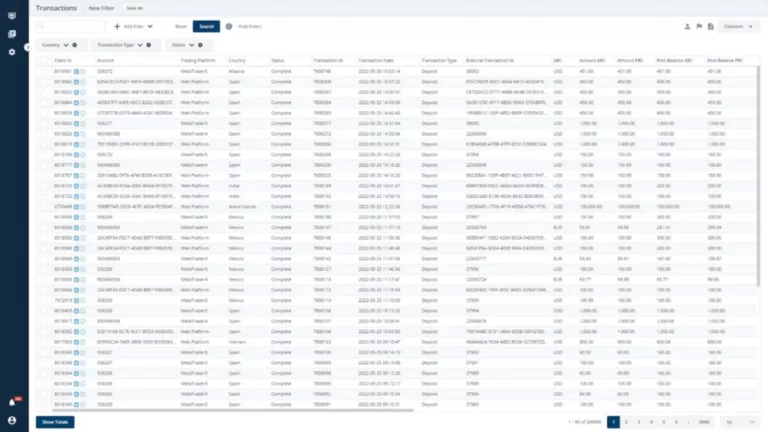Content
With the nature of the distribution of private keys, MPC wallets make it much more difficult for unauthorized access. Open the future of safe digital payments with the assistance of understanding our detailed guide to MPC wallet. Discover why the administration of your digital assets is better, safer, and more confidential with the assistance of a Multi-Party Computation solution with Proof of identity (blockchain consensus) DeFi Wallet Development Company. Learn what are the benefits, what makes MPC wallets distinct, and what steps are advised to be taken for employing MPC wallets for the protection of financial operations. With the help of partners holding private key shares, MPC wallets can enable safe escrow services that guarantee transactions only proceed when all requirements are satisfied. When it crypto wallets, it means that private keys are always in a whole form, and never in a singular.
- The above results are in a model where the adversary is limited to polynomial time computations, and it observes all communications, and therefore the model is called the `computational model’.
- Major financial institutions, such as Revolut, have already announced their transition to MPC, which effectively eliminates the existence of whole or complete cryptographic keys to protect against both internal and external adversaries.
- The choice between the two wallets should depend on your specific needs and preferences.
- Liminal Custody is a leading digital asset wallet and custody infrastructure company.
- In this scenario, the employees would use a multi-party computation (MPC) protocol to calculate their average salary without disclosing sensitive or private information.
What is MPC (Multi-Party Computation)?
This approach not only divides the control over the keys but also makes it difficult for hackers to seize them. Implement mpc crypto support for key blockchain operations, such as signing transactions, broadcasting them to the network, and retrieving account balances. Test for interoperability across multiple blockchain ecosystems, especially if supporting numerous cryptocurrencies. MPC wallets allow users to define thresholds for shard participation in signing transactions, such as 2-of-3 or 3-of-5 setups. This flexibility makes them suitable for both personal use and collaborative environments requiring multi-party approvals. Nevertheless, MPC wallets are still among the most secure options for digital asset storage on the market, and their benefits outweigh the drawbacks for most custodians.
Quickly scale your wallets without sacrificing security
Firstly, they can be faster and more agile to use than cold wallets, where transaction signing must take place offline before being broadcast on the blockchain network. https://www.xcritical.com/ Before MPC technology became more widely available, the inefficiencies of cold wallets meant that many custodians relied on more vulnerable hot wallets to meet daily operational funding needs. The two party setting is particularly interesting, not only from an applications perspective but also because special techniques can be applied in the two party setting which do not apply in the multi-party case. Indeed, secure multi-party computation (in fact the restricted case of secure function evaluation, where only a single function is evaluated) was first presented in the two-party setting. The original work is often cited as being from one of the two papers of Yao;[20] although the papers do not actually contain what is now known as Yao’s garbled circuit protocol. Historically, there have been a few primary options for securely storing private keys.
Select Cryptographic Algorithms
In a traditional AI integrated smart crypto wallet, a single private key is generated and stored, which becomes a single point of vulnerability. Instead, the wallet uses a distributed key generation protocol to produce key shards across multiple devices or entities. These shards are stored securely, ensuring no single entity has complete access to the private key. This decentralized approach significantly reduces the risk of hacking or loss due to device theft. However, financial institutions and custodians handling large amounts of digital assets require more advanced methods to secure funds. A single key represents a point of weakness for hackers to target, so it’s a cybersecurity risk that should be mitigated.

What is MPC Wallet – Your Guide to Multi-Party Computation

Multi-party computation (MPC) is a cryptographic protocol that enables multiple parties to compute a single function based on their individual inputs without any input being revealed to the other parties. MPC wallets are a practical implementation of MPC technology, offering benefits such as security and efficiency of fund transfer. As the name suggests, an MPC wallet uses multi-party computation technology to offer enhanced security for your cryptocurrencies and other digital assets. It basically splits a wallet’s private key among multiple parties to increase privacy and reduce the risks of hacking, breaches, and losses.

Hot wallets can be vulnerable to hacking, while cold storage can be slow and inflexible. Among the different types of crypto wallets, custodial wallets are the ones that hold and manage your assets and private keys. In contrast, non-custodial wallets are the ones that allow users to hold and control their private keys. Major financial institutions – including BNY Mellon (the largest global custodial bank) and Revolut (Europe’s largest neobank), have announced their transition to MPC.
But in 2021, multi-party computation is only one part of the equation for digital asset security. This introduces new configuration possibilities for institutions in regions with specific regulations around cold storage and strengthens the security of MPC wallets by adding a key refresh mechanism (minutes-long intervals). Some hot wallets utilize multisignature, or multisig, technology to divide private keys into multiple shares. Unfortunately, multi-sig is not protocol-agnostic (meaning it’s not compatible with all blockchains), and lacks the operational flexibility to support growing teams.
Whereas MultiSig wallets use on-chain signatures, potentially exposing approving entities to hackers, MPC wallets offer enhanced privacy. The signature is submitted on-chain, but the signing process is carried out off-chain, meaning it’s private. The on-chain signature looks the same as any other wallet, making it indistinguishable as an MPC-enabled transaction.
Later these parties compute their private keys without actually reconstructing the original one. Still, its applications with Web3 wallets have just begun to provide an improved foundation for better user experiences, increased security, and streamlined transactions. EVM compatible blockchains account and Ethereum is paving the way for web3 wallets, an enhanced version of traditional wallets available today. Many smart accounts are turning in different directions of smart wallets such as MPC Wallets.
On the other hand, MPC wallets use multi-party computation to secure transactions by dividing a private key into multiple encrypted shares distributed among various parties. Transactions happen off-chain, so only one signature broadcast on-chain makes it cheaper and faster than multi-sig. In addition, with the private key completely secure, users can now hold their assets online and no longer need cumbersome cold-storage devices. This means that transferring digital assets is now more fluid and no compromise is required between security and operational efficiency. In contrast, MPC based wallets employ a technique called multi-party computation (MPC) to secure transactions. The private key is divided into multiple encrypted shares distributed among various parties.
Include mechanisms for shard recovery in case of loss while maintaining privacy and integrity. MPC wallets often require robust infrastructure for secure shard distribution and communication. A failure in any part of this infrastructure, such as server outages or connectivity issues, can temporarily disrupt access or transaction processing.
As an organization that manages digital assets expands, adjusting the process of accessing and transferring digital assets using a multisig protocol can be cumbersome. Configuration of this kind offers users the possibility to use server capabilities for performing transactions while still being in control of their private key shares. Apart from traditional methods like seed phrases MPC wallet works by dividing private keys into multiple parts to ensure that the keys are not focused on a single-point failure. With different ways of working, MPC wallets also provide the majority of advantages.
Whether you’re an individual seeking a secure storage solution or an enterprise managing vast digital assets, MPC wallets offer a reliable and innovative approach to safeguarding funds. MPC wallets use a form of cryptography called multi-party computation, which enables multiple parties to jointly compute a problem without ever revealing their individual inputs. When applied to a wallet, MPC is used to split the private key into shares stored in different locations and linked to different users. When a transaction is requested, each share must be computed from its respective location to authorize the transaction.
While MPC wallets provide redundancy, losing too many key shards beyond the recovery threshold can permanently lock users out of their funds. This makes careful shard management and secure storage essential to avoid irrecoverable asset loss. The advanced cryptographic processes underlying MPC wallets can be difficult for the average user to understand. This complexity may lead to user errors during setup, shard management, or transaction signing, potentially compromising wallet functionality or security. Partnering with a reputable Ethereum development firm can help deal with the complexities. Unlike multi-signature wallets, which require multiple keys for transaction authorization, MPC wallets allow seamless and secure transactions without needing all parties to come together physically.
However, this still doesn’t reach the level of operational efficiency necessary for today’s markets. In addition, Gennaro and Goldfeder’s algorithm doesn’t offer any flexibility for institutions that need to use cold storage. Up until that point, the majority of cryptography had been about concealing content; this new type of computation focused instead on concealing partial information while computing with data from multiple sources. Different MPC wallets offer different features and services that can enhance your crypto experience. For example, some MPC wallets offer buying and selling crypto with fiat, biometric authentication or more granular access controls.
